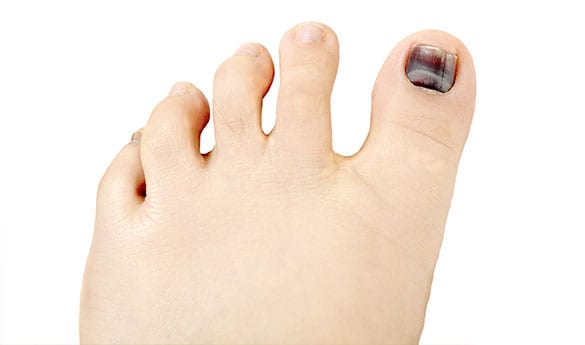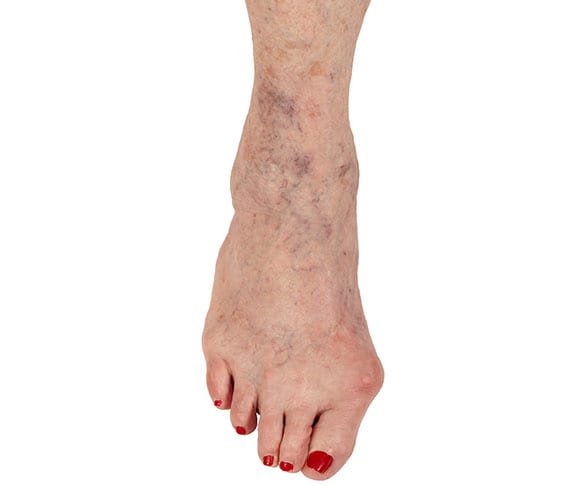
LA Orthopedic Group can help provide relief from Hammertoes.
Hammertoes are a deformity and got their name because the toes take on the appearance of a hammer. When there is an imbalance in the muscles and ligaments of a toe joint, the middle joint will bend or buckle and remain in that position.
- Toes that curl may still be considered hammertoes
- Curling happens frequently with baby toes
- Middle toes are affected more than the outer toes
CONTACT US TODAY
Causes
In addition to a muscle and ligament imbalance, hammertoes are caused by genetics that give a person unstable feet. They may have flat feet or high arches, which can lead to the toe deformity. Arthritis and age can also contribute to hammertoes. Toe injury is a big hammertoe development factor. Often, shoes are the injuring party. When shoes are too short, too high, too tight or have too much of a point, toes get out of balance, feel pressured, and get injured. Hammertoes tend to follow.
Symptoms
Signs that a hammertoe has developed include the telltale hammer appearance. Corns forming on top of the deformed toe joint, pain when shoes touch the area, swelling, and redness also indicate hammertoes. Patients also experience pain directly under the toe on the ball of the foot.
Those suffering from the condition often complain of rubbing and irritation occurring on top of the affected toe, and women tend to have more pain from the condition because of the types of shoes they wear.


Nonsurgical Treatment
Nonsurgical treatment includes wearing better fitting shoes and possibly adding pads. The orthopedic doctor may recommend anti-inflammatory medicine, give cortisone shots, or recommend foot exercises. When these options are exhausted and the problem persists, surgery may be the solution.
Candidate for Surgery
Only a physician should determine which patient is a good candidate for surgery, but there are guidelines a patient can use to see if they fit the profile. Operative procedures are not recommended for those with poor feet circulation, active infections, and other conditions that make surgery risky. For otherwise healthy patients, an orthopedic doctor may recommend surgery when non-operative techniques have failed to help.
Surgical Options
Surgery to treat hammertoe is typically an outpatient procedure. Patients may be awake, or they may be asleep during surgery. One procedure is for a flexible hammertoe. An orthopedic surgeon reroutes tendons in the bottom of the toe and places them on the top of the affected toe. This makes the bent joint straight.
A fixed hammertoe procedure is used on stiffened toe deformities. Physicians have two options, one of which is a joint resection. This involves an incision on top of the toe and the cutting of tendons and ligaments. The end of the bone is cut off. After being held in a straight position with pins for about a month, the toe should remain straight on its own.
Fusion is the other fixed toe option. Tendons and ligaments are cut, and the bone ending is cut off in this procedure as well. Pins or screws hold the toe straight until bones fuse together.




